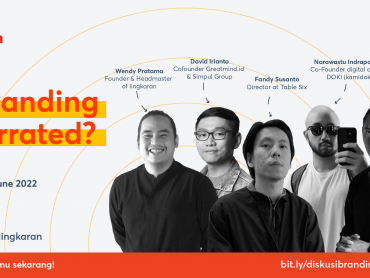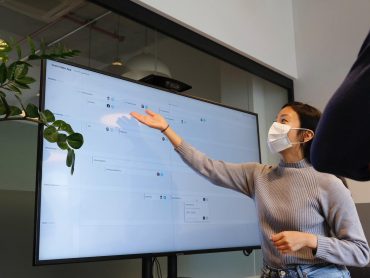
How to Hire The Right People
–
Let’s start with an honest statement:
It’s not easy at all to build The Dream Team, even to hire the right people.
As a millennial–with no background working at a big company before started lingkaran, it’s kinda challenging to choose your fellow millennial co-workers, build the culture, and finally maintain them as a good team. How to start? What kind of people do I need? Where to find them? Should I hire based on skill or personality? You know, those kind of questions.
For the past 3.5 years I’ve struggled to find and build The Dream Team. I’ve worked with almost 20 people, from lingkaran 1.0 to 3.0 in that short of time. They came and go in a blink of an eye, and somehow it frustrated me. But I didn’t give up to always improve myself, adjust the culture, and look for different ways to maintain and engage with them. Cause I believe that…
–
–
And after a long journey (well I’m pretty sure it ain’t over), now I’m more than grateful to have 15 of them in our small team. And also made me believe that “You don’t build a business. You build people and then people build the business.”
–
–
I’ll share my journey on how I hire the right people and build my dream team that will be the backbone of the business itself.
–
01 – THE BIG EMPATHY
“Empathy is.. seeing with the eyes of another, listening with the ears of another, and feeling with the heart of another.”
I started with the open recruitment. Like we all know, most of the companies will bluntly said that they need a X position or there is an empty position as X, send your CV to [email protected]. I use this phase to exercise my empathy and also to start filtering the right (re: like-minded) prospective applicants.
I tried to think what they think when they’re looking for a job, what they’re feeling, what they wanna achieve when applying to one company. After all these years, I know that we, as a company, are more attractive for fresh grads and those who wants to develop themselves and seek for values more than other benefits. Plus for some of them flexibility is becoming more important.
Then after researching and benchmarking, I came up with the idea of humanize human beings– to value them more than the job itself. We appreciate them as a human– not just as our team, but the way they are. We help them maximize their potentials and connect with their next possibilities.
See the campaign here.
–
02 – THE HIRING PROCESS
“Your vibe attracts your tribe.”
This is one of the quite advance process that I’ve made for lingkaran so far. And I’m happy to share with you. After I managed to attract the right tribe with the same vibe, now it’s time to curate and choose them. There was a time when I interviewed all of the applicants after they sent me their CV, and you surely know that it was exhausted. I concluded that I only can interview 4-5 people per day. So what should I do is to curate them before I meet and interview them. And here they are the quite long stages for prospective applicants to apply in lingkaran.
1. Paper Screening
Start with screening their CVs and portfolios.
2. Personal Introduction
Then they will fill in the persona introduction form that we have personally crafted to get to know them better. From their favourite books, movies, music, to what they usually talk with their friends. It useful for us to understand their personality.
3. Case Study
After get to know personally, we have to know their skill and ability as well. For some particular positions, we have case studies for them to be done. This help us to get a clear vision what (precisely) they understand and can deliver in terms of their position.
4. Interview & Presentation
All of the phase before will be proven in interview and presentation. We value face to face interaction more than anything. This will help us to decide whether the applicants is matching with what they’ve been saying this whole time or not. This is one of the key phase during the hiring process.
5. Team Lunch
After being interviewed with me and team leaders, applicants will also get a chance to lunch with the whole team. It is somewhat important to align their values and check their compatibility and vibe with the existing team– or at least verify whether their jokes is aligned with one another or not.
6. Personality Test
Since we can’t pay psychologist professional service, we are still using the MBTI to test their personality deeper. We usually use https://16personalities.com/ and https://good.co/
7. Finalization
Voila this is the final step! If they all have passed 6 phases before, we will welcome them as our new team member. This phase is all about administration, learn product knowledge, and understand the workflow.
–
03 – THE CODE OF CULTURE
“We are not just a company. We are a mission.”
After they are on board, now is the time to make them be on the same page. Before we talk about culture, let’s start with behaviour– or even earlier, daily habits. That heavy statement of behaviour is always started with what we do in our day by day activities. After 1278 days, I tried to sum up our daily behaviours and turn it into The Code of Culture. Here they are:
–
–
04 – THE PERKS
“There are many more effective ways to keep your talent happy and engaged, beyond salaries.”
Perks matter. Companies in today’s work culture compete for the best talent in the market by trying to one-up each other with abundant benefits and extras for their employees. For today’s worker, oftentimes salaries are more of a threshold than a scorecard. Company perks remain a major opportunity for most companies, who aren’t taking full advantage of the appeal of non-monetary benefits for most employees.
Company perks remain a major opportunity for most companies, who aren’t taking full advantage of the appeal of non-monetary benefits for most employees. A recent industry study reported that 48% of employees would weigh company benefits and perks, including the availability of snacks, in their decision to find their next job. The opportunity to continue education, do volunteer work, get local discounts or even participate in a forum to share personal interests is a powerful draw. It helps your company’s community and creates a broader sense of who’s sitting around you, or in other departments, rather than just a half-remembered name and a face.







